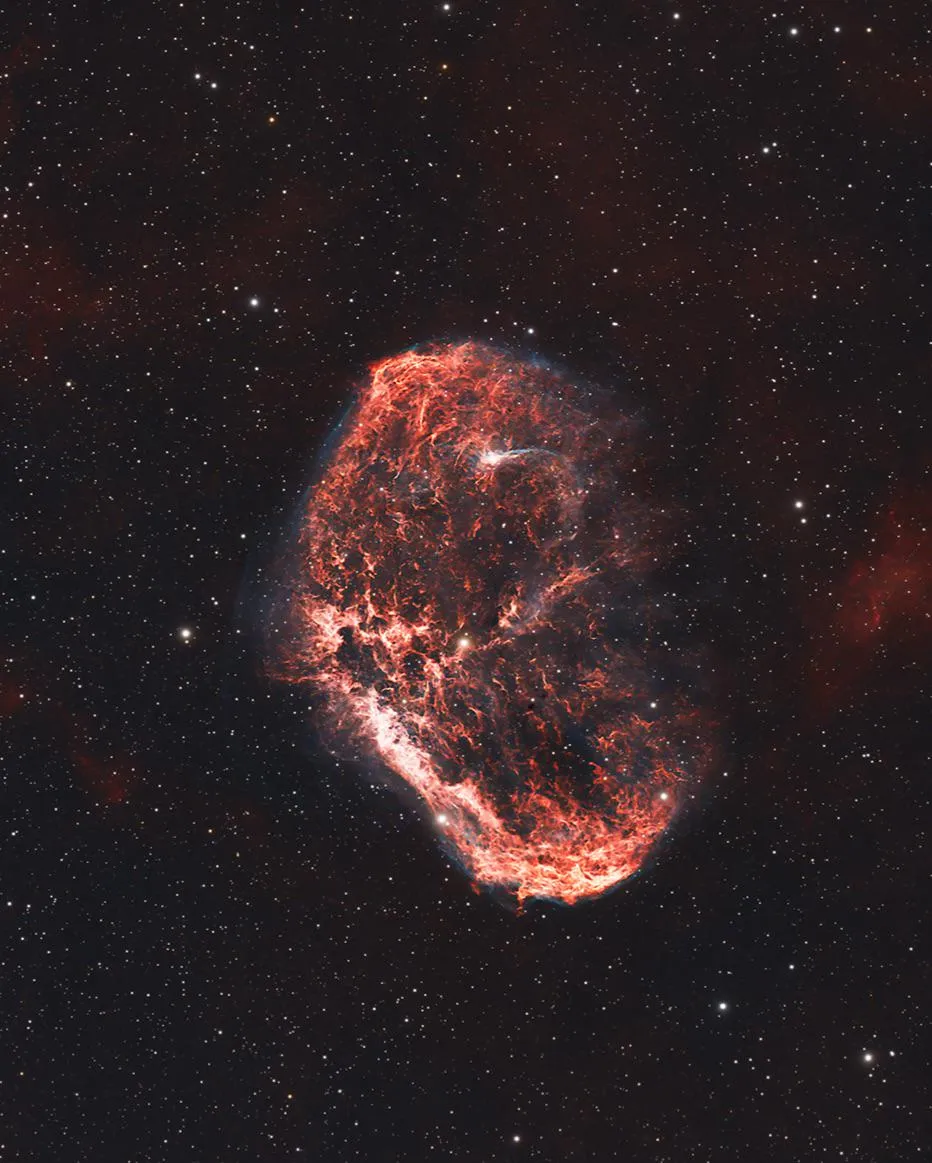Crescent Nebula in HOO: An Astrophotography Deep Dive
The cosmos is an endless source of wonder, and few objects inspire as much awe as the celestial nebulae—vast clouds of gas and dust where stars are born or where remnants of stellar explosions linger. Among these, the Crescent Nebula, also known as NGC 6888, stands out as a particularly beautiful and intriguing target for astrophotographers.
Located in the constellation Cygnus, the Swan, the Crescent Nebula is an emission nebula roughly 5,000 light-years away. Its distinctive crescent shape is sculpted by the powerful stellar winds of its central, massive Wolf-Rayet star, WR 136, which is shedding its outer layers at an incredible rate. These powerful winds collide with and illuminate the slower-moving stellar material ejected by the star in an earlier phase, causing the gas to glow brightly.
Unveiling the Crescent Nebula in HOO
This stunning image of the Crescent Nebula utilizes the HOO (Hydrogen-Alpha, Oxygen III, Oxygen III) narrowband imaging technique. Narrowband filters isolate specific wavelengths of light emitted by different elements within the nebula, allowing for incredible detail and contrast, even under light-polluted skies. In this HOO rendition, Hydrogen-Alpha (Ha) data typically represents the red channel, while Oxygen III (OIII) is mapped to both the green and blue channels, creating a vibrant palette that highlights the distinct gaseous structures.
The Astrophotography Rig
Capturing such faint and distant objects requires a sophisticated setup and a significant amount of dedication. Here's a look at the equipment used for this particular capture:
Primary Setup
- Mount: @skywatcherusa Wave 150i – A robust equatorial mount crucial for precise tracking over long exposures.
- Camera: ZWO ASI533MC Pro – A popular dedicated astronomy camera known for its low noise and high sensitivity.
- Telescope: Askar 103APO – A high-quality apochromatic refractor, delivering sharp and color-corrected images.
Guiding System
To ensure pinpoint stars over hours of exposure, an accurate guiding system is essential:
- Guide Camera: ZWO ASI120MM Mini – A sensitive monochrome camera for detecting guide stars.
- Guide Scope: William Optics UniGuide 32 – A compact and precise scope to assist the guide camera.
Filters & Control
- Filters: @svbony SV220 7nm H-Alpha/OIII and Askar D2 7nm OIII/SII – These narrowband filters were key in isolating the specific wavelengths to create the HOO image.
- Computer: ASIAIR Plus – An integrated smart device that simplifies equipment control, guiding, and image acquisition.
Capturing the Light: Exposure Details
Astrophotography is a game of collecting light, and patience is paramount. This image is the result of extensive data collection:
- Total Exposure Time: A remarkable 24 hours of total integration time, ensuring even the faintest details of the nebula were captured.
- Ha/OIII: 20 hours (240 individual exposures of 300 seconds each)
- OIII/SII: 4 hours (48 individual exposures of 300 seconds each)
- Bortle Scale: This image was captured under Bortle Scale 9 skies. This indicates severe light pollution, highlighting the power of narrowband filtering to cut through urban glow and reveal nebular structures that would otherwise be invisible.
The Art of Processing
Raw astronomical data, while rich, needs significant post-processing to reveal its true beauty. The following software was used:
- PixInsight: A comprehensive image processing platform widely used in astrophotography for calibration, stacking, noise reduction, and initial stretching.
- Photoshop: Used for final touches, color adjustments, sharpening, and other aesthetic enhancements.
Through meticulous capture and advanced processing, the captivating beauty of the Crescent Nebula is brought to life.

This image stands as a testament to the dedication and technological prowess involved in modern astrophotography, allowing us to witness the ethereal beauty of distant cosmic phenomena from our own backyard, even under challenging light-polluted conditions.




